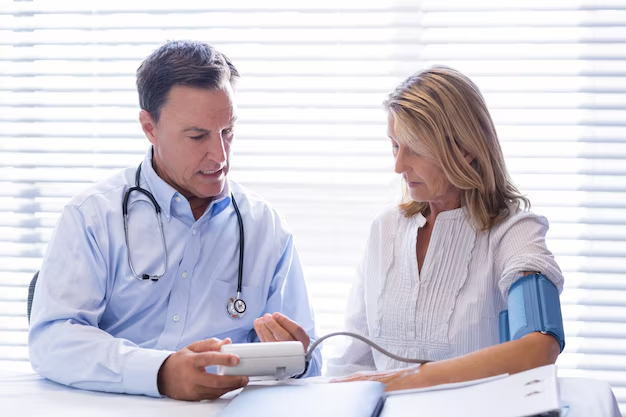Recognizing the Signs of Prostate Cancer: What You Should Know
Prostate cancer is often a silent adversary, creeping up on its victims without much fanfare. For many men, the symptoms emerge subtly, painting an incomplete picture that can be easily ignored or misinterpreted. Understanding these symptoms is crucial, particularly as prostate cancer can be managed successfully when detected early. This article delves into the various symptoms associated with prostate cancer, enhancing your awareness and empowering you to act swiftly if necessary.
Unveiling the Common Symptoms of Prostate Cancer
Urinary Challenges: The First Hints
One of the most ubiquitous signs of prostate cancer involves urinary habits. Men might notice:
- Increased frequency of urination, particularly noticeable at night.
- Difficulty starting urination or maintaining a steady stream.
- A sensation of incomplete bladder emptying.
- Pain or burning during urination.
Hematuria: A Visible Symptom
Though less common, some individuals might observe blood in the urine (hematuria). This occurrence often raises immediate concern and prompts further investigation. While this can be indicative of prostate cancer, it's crucial to recognize it as a symptom shared with other conditions as well.
Erectile Dysfunction: An Intimate Symptom
Changes in sexual function can also be an early warning sign. Men may experience:
- Difficulty achieving or maintaining an erection.
- Decreased sexual stamina or lower libido.
Persistent Pain: A Deeper Indicator
When prostate cancer begins affecting adjacent areas, it may manifest as pelvic discomfort or lower back pain. This pain is often dull and persistent, subtly nagging rather than acute.
Advanced Symptoms: When Cancer Progresses
As the cancer advances, symptoms typically escalate. Bone pain—particularly in the hips, spine, or ribs—can emerge, signaling that cancer cells have spread. Additionally, some might face unintentional weight loss and fatigue, a reflection of the body's fight against cancer.
Contextualizing Prostate Cancer Symptoms
Understanding the Prostate's Role
The prostate is a small gland located below the bladder and in front of the rectum. It plays a critical role in reproductive health, producing seminal fluid that nourishes and transports sperm. Given its position, any swelling or growth, such as cancer, can significantly impact neighboring organs, leading to noticeable symptoms.
Who Is at Risk?
Several factors can increase the risk of developing prostate cancer, impacting both the awareness and interpretation of potential symptoms:
- Age: Men over the age of 50 are more susceptible.
- Family History: Those with a family history of prostate cancer face a higher risk.
- Ethnicity: African American men have a higher incidence rate.
- Diet and Lifestyle: Diets high in processed foods or low in vegetables may increase risk.
Distinguishing Prostate Cancer from Other Conditions
Many of the symptoms associated with prostate cancer mimic other conditions, such as prostatitis or benign prostatic hyperplasia (BPH). This overlap underscores the importance of professional evaluation rather than self-diagnosis.
Navigating Concerns: Steps to Take
Keeping an Eye on Symptoms
Men experiencing any of the aforementioned symptoms should prioritize regular medical check-ups. While these symptoms can result from non-cancerous conditions, they still warrant attention.
Prostate Screening: A Lifesaving Tool
Regular prostate screenings are pivotal, particularly for men over 50 or those at increased risk. Screenings typically involve:
- PSA (Prostate-Specific Antigen) Test: Measures the level of PSA in the blood, with elevated levels potentially indicating cancer.
- Digital Rectal Exam (DRE): A physical examination where a healthcare provider feels the prostate for abnormalities.
Seeking Professional Evaluation
When any abnormal symptoms arise, consulting with a healthcare professional expedites the process of determining cause and appropriate action. Specialists may recommend further testing, such as biopsies or imaging scans, to confirm or rule out cancer.
Proactive Measures & Health Maintenance
Embracing a Healthy Lifestyle
While not a guaranteed shield, maintaining a healthy lifestyle can reduce the risk of prostate cancer. Consider incorporating:
- A balanced diet rich in fruits, vegetables, and lean proteins.
- Regular exercise to maintain a healthy weight and improve overall well-being.
- Limiting alcohol intake and quitting smoking, as both are health risk factors.
Staying Informed and Vigilant
Education is empowerment. Staying informed not only helps recognize early symptoms but also encourages timely medical consultations. Men should engage in open conversations with family and healthcare providers to understand their risk factors better and tailor screening strategies.
Final Insights
Being mindful of your body's signals can make all the difference in addressing prostate cancer effectively. Early detection through symptom awareness and proactive health measures remains a man's best defense. Recognizing the blend of urinary changes, sexual function alterations, and persistent pains, along with regular screenings, paints a picture of vigilance rather than dread.
It's crucial, however, to approach any symptoms with due caution, avoiding hasty conclusions. A thorough evaluation by healthcare professionals will guide the path forward, ensuring both peace of mind and health preservation.
Quick Reference: Key Points to Remember
- 🤔 Symptom Awareness: Look out for urinary changes, difficulty in urination, blood in urine, erectile dysfunction, and persistent pelvic pain.
- 🛡️ Regular Screenings: Prioritize PSA tests and DRE, especially if over 50 or at increased risk.
- 💡 Stay Informed: Understand your risk profile and engage in open conversations about health.
- 🏋️ Healthy Lifestyle: Encourage a balanced diet, regular exercise, and limit harmful habits.
- 🚨 Seek Evaluation: Don’t ignore persistent symptoms; early detection is critical.
Maintain health literacy, embrace regular check-ups, and encourage a proactive approach to health to effectively tackle prostate cancer risks.

Related Articles
- Are Breast Cancer Lumps Painful
- Are Chills a Sign Of Cancer
- Are Colon Spasms a Sign Of Cancer
- Are Lytic Lesions Always Cancer
- Are Polyps Cancer
- Can a Blood Test Detect Cancer
- Can a Ct Scan Detect Cancer
- Can a Dexa Scan Show Cancer
- Can a Gastric Emptying Scan Show Cancer
- Can a Lung Biopsy Cause Cancer To Spread